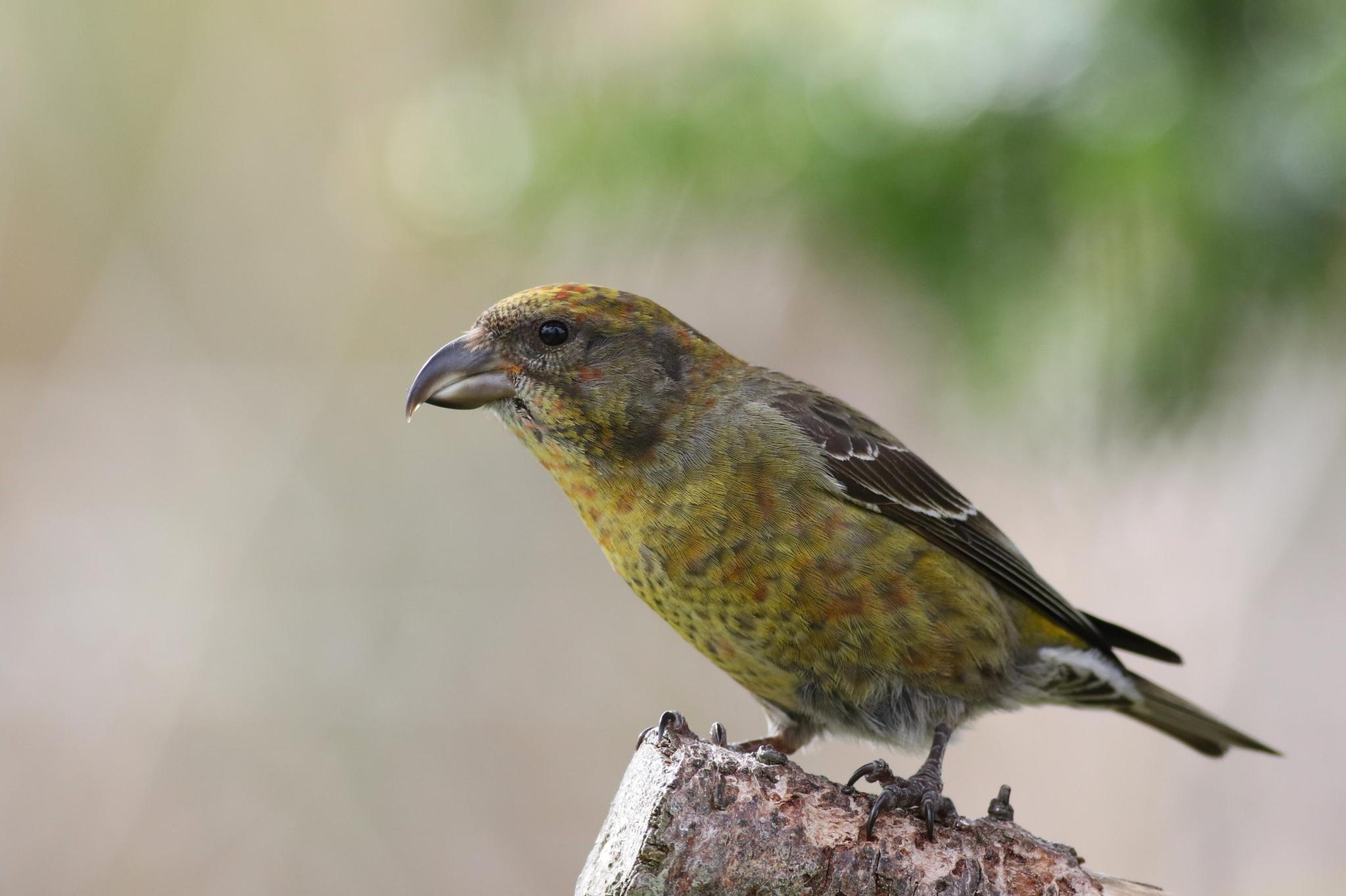By: Jody Allair, Director, Community Engagement
The Red Crossbill has a trick to access food other species can’t get to: their very specialized crossed bill is designed for prying open the stiff cones of conifers to get the nutritious seeds on the inside. These enigmatic birds can be found year-round throughout coniferous forests across Canada and the US. And, like many of their finch cousins, they tend to be irruptive—moving huge distances to find bumper crops of cones.
Red Crossbills are a stocky, medium-sized songbird. They are typically the same size as a House Sparrow. Adult males are predominantly brick red, with darker wings and tail. Adult females are a stunning lime green but can also be a yellow-brown colour.

Red Cossbill photo: Alain Clavette
There are so many fascinating elements to the life history of the Red Crossbill that you could fill a book!
First, they will nest anywhere, at any time of year, provided there is an abundance of food. The second is that researchers studying populations of Red Crossbills across North America have determined that there are 12 different “types” of Red Crossbills, each with their own unique vocalizations and bill shapes. They even have preferred tree species within their ecoregions. Several years ago, one of these Types (Type 9) from Southern Idaho was elevated to its own distinct species in 2017—the Cassia Crossbill.
In Canada, only the Newfoundland (Type 8) percna subspecies of Red Crossbill is considered Threatened, with fewer than 2,500 adults estimated.
Red Crossbills fly from tree to tree, foraging and eating in flocks. You will also hear the distinctive flight calls of the Red Crossbill – jip-jip-jip – as they chatter from conifer trees with lots of tasty cones.
Want to attract Red Crossbills to your yard? Then consider planting native pine, spruce, fir, or hemlock species.
For a list of conifer species that are native to your neck of the woods visit: www.birdgardens.ca

